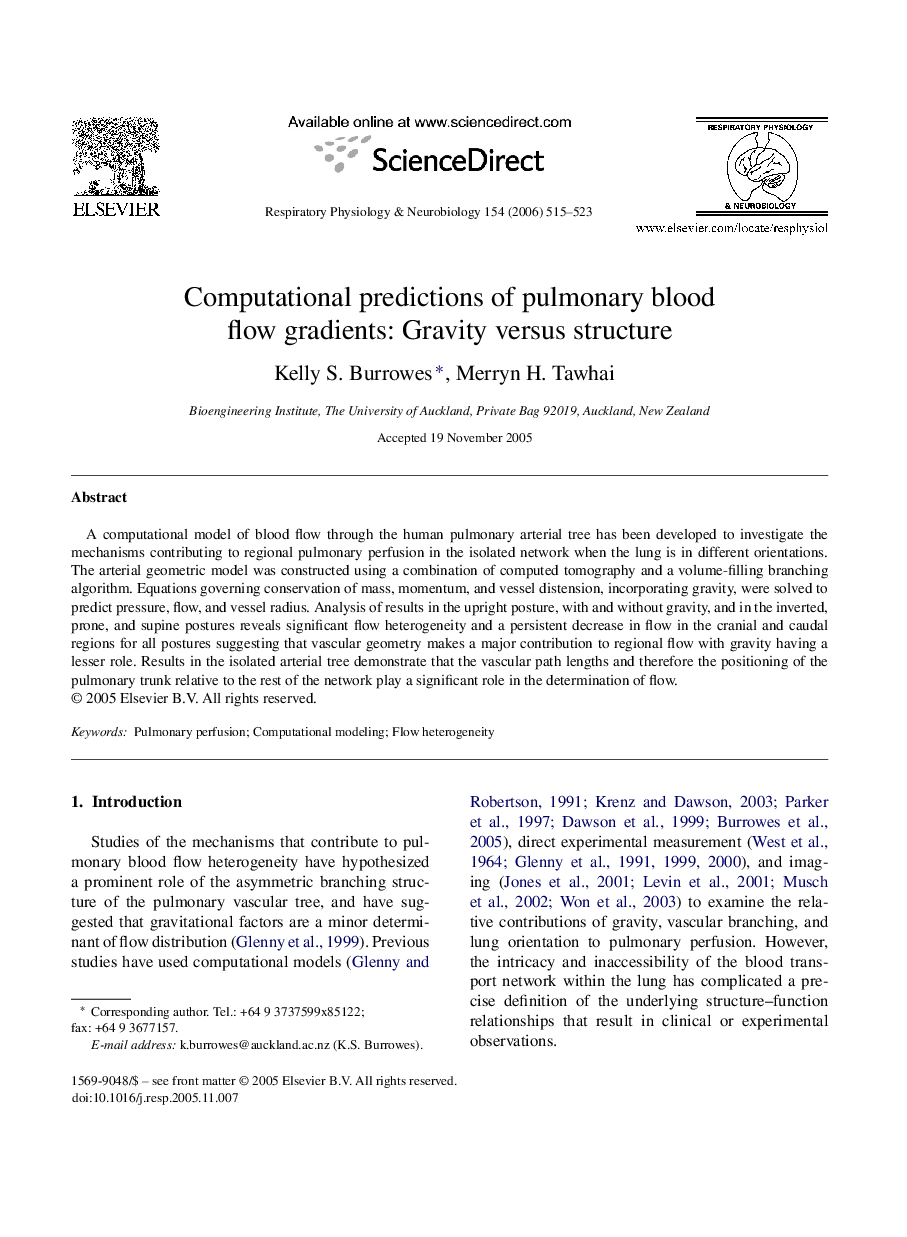| Article ID | Journal | Published Year | Pages | File Type |
|---|---|---|---|---|
| 2848377 | Respiratory Physiology & Neurobiology | 2006 | 9 Pages |
A computational model of blood flow through the human pulmonary arterial tree has been developed to investigate the mechanisms contributing to regional pulmonary perfusion in the isolated network when the lung is in different orientations. The arterial geometric model was constructed using a combination of computed tomography and a volume-filling branching algorithm. Equations governing conservation of mass, momentum, and vessel distension, incorporating gravity, were solved to predict pressure, flow, and vessel radius. Analysis of results in the upright posture, with and without gravity, and in the inverted, prone, and supine postures reveals significant flow heterogeneity and a persistent decrease in flow in the cranial and caudal regions for all postures suggesting that vascular geometry makes a major contribution to regional flow with gravity having a lesser role. Results in the isolated arterial tree demonstrate that the vascular path lengths and therefore the positioning of the pulmonary trunk relative to the rest of the network play a significant role in the determination of flow.
